A catastrophic natural disaster struck the picturesque mountain village of Dharali in Uttarakhand’s Uttarkashi district on August 5, 2025, when a powerful Uttarkashi cloudburst triggered deadly flash floods that swept away entire neighborhoods and left a trail of unprecedented destruction. The sudden deluge, which occurred around 1:45 PM local time, has confirmed four deaths while over 60 people remain feared trapped beneath tons of debris and mud.
The Uttarkashi cloudburst event unfolded with terrifying speed in the catchment area of the Kheer Ganga river, transforming the normally peaceful tourist destination into a scene of absolute devastation. Eyewitnesses described hearing desperate screams as torrents of muddy water, rocks, and debris cascaded down the mountainside, completely obliterating buildings that had stood for decades.
Trump tariffs on India Crushing $87 Billion Export Economy
Catastrophic Scale of Uttarkashi Cloudburst Destruction
The sheer magnitude of destruction caused by this Uttarkashi cloudburst has shocked even seasoned disaster management officials. According to local authorities, approximately 40-50 houses were completely washed away, while an estimated 20-25 hotels and homestays – the economic backbone of this tourist region – vanished within minutes.
District Magistrate Prashant Arya confirmed the preliminary death toll of four, but warned that the numbers could rise significantly as rescue operations progress. “The situation remains extremely critical,” Arya stated during a press briefing, emphasizing the challenges faced by emergency responders.
The Uttarkashi cloudburst particularly devastated Dharali’s main market area, which was bustling with activity when disaster struck. Local residents reported that many people had gathered for a religious fair, significantly increasing the number of individuals present during the tragedy. This timing factor has raised serious concerns about the potential for a much higher casualty count.
Mohsen Shahedi, DIG of the National Disaster Response Force, provided grim details about the destruction: “According to initial reports, around 40-50 houses have been washed away, and more than 50 people are estimated to be missing”. The scale of infrastructure damage extends beyond residential areas, with critical transportation links, communication towers, and essential services completely disrupted.
Shocking Astronomical Banking Error: How 20 Year Old Noida Man Septillion Bank Account Glitch Exposed Digital Banking Vulnerabilities
Military Personnel Among Missing in Uttarkashi Cloudburst
In a particularly tragic turn of events, the Uttarkashi cloudburst has also impacted military personnel stationed in the region. Reports confirm that 11 soldiers from the Indian Army are among those missing after floodwaters struck an army camp in the nearby Harsil area.
Despite facing their own losses, military units have demonstrated remarkable dedication to rescue operations. Colonel Harshvardhan, commanding officer of the 14th Battalion Rajputana Rifles, is personally leading 150 personnel in critical rescue and relief operations. The Defense PRO’s statement highlighted the extraordinary circumstances: “Despite being cut off and the unit’s base being adversely affected, and 11 personnel feared missing, the team continues to operate with unwavering determination”.
Legendary Tribal Leader Shibu Soren, JMM Founder and Former Jharkhand CM, Passes Away at 81
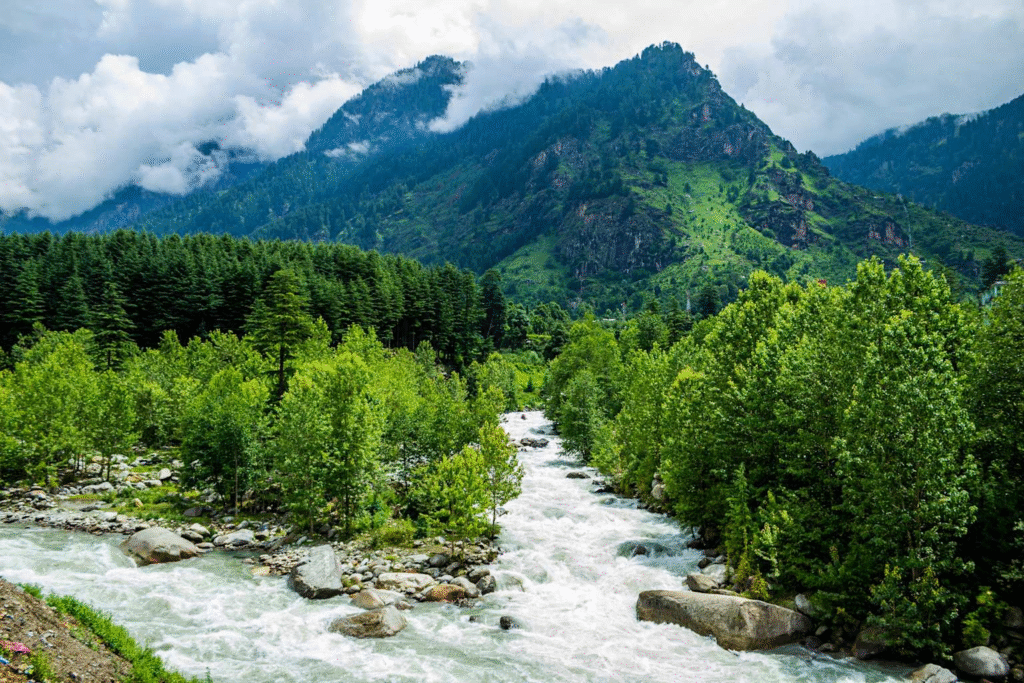
Meet the All-New 2026 BMW F 450 GS: Bold Design, Full Specs & Adventure-Ready Power
The military’s response to the Uttarkashi cloudburst showcases both the tragedy’s severity and the armed forces’ commitment to civilian safety. Additional army columns have been mobilized from surrounding areas to support ongoing rescue efforts, while the Indian Air Force has placed multiple helicopter squadrons on standby.
Meteorological Mystery Behind Uttarkashi Cloudburst
The circumstances surrounding this Uttarkashi cloudburst have puzzled meteorological experts, as recorded rainfall data doesn’t align with typical cloudburst parameters. The India Meteorological Department (IMD) confirmed that Uttarkashi district received only light to moderate rainfall on August 5, with measurements ranging from 8mm to 43mm – well below the 100mm threshold typically associated with cloudbursts.
Rohit Thapliyal, senior scientist at IMD’s regional meteorological center, explained the anomaly: “Only very light to light rain was observed in the affected area over 24 hours. The highest rainfall recorded anywhere in Uttarkashi was merely 27mm at the district headquarters”. This discrepancy has led experts to investigate alternative explanations, including potential glacial lake outburst floods (GLOF) or upstream dam failures.
Some geological experts suspect that the Uttarkashi cloudburst designation might be inaccurate, with the actual cause being a glacier collapse or glacial lake breach upstream rather than localized extreme precipitation. This theory gains credibility when considering the volume and debris content of the floodwaters, which exceeded what typical rainfall could generate.
Historical Pattern of Himalayan Disasters
The Uttarkashi cloudburst tragedy represents the latest in a disturbing pattern of natural disasters affecting the Himalayan region. Uttarakhand has experienced multiple catastrophic events in recent decades, including the devastating 2013 Kedarnath floods that killed over 5,700 people, and the 2021 Chamoli disaster that resulted in more than 200 casualties.
Environmental scientists point to several contributing factors that make regions susceptible to events like the Uttarkashi cloudburst. The young Himalayan mountain range remains geologically unstable, with ongoing tectonic activity creating conditions favorable for landslides and sudden water releases.
Dr. S.P. Sati, a prominent geologist studying the region, noted that the Kheer Ganga river has a documented history of destructive flooding. “Every two-three years, the river overflows and its debris wreaks havoc. In 2018 and 2021, the river caused significant damage in Dharali,” Sati explained. Historical records indicate that the worst flooding occurred in 1835, when the entire town of Dharali was submerged.
Rescue Operations Face Multiple Challenges
Emergency response efforts following the Uttarkashi cloudburst have encountered numerous obstacles, from blocked transportation routes to dangerous weather conditions. Multiple agencies, including the National Disaster Response Force (NDRF), State Disaster Response Force (SDRF), Indo-Tibetan Border Police (ITBP), and Indian Army units, are coordinating rescue operations.
The rescue teams have achieved some success despite challenging conditions, with reports indicating that over 130 people have been safely evacuated from the disaster zone. However, continuous rainfall and the risk of additional landslides have complicated efforts to reach all affected areas.
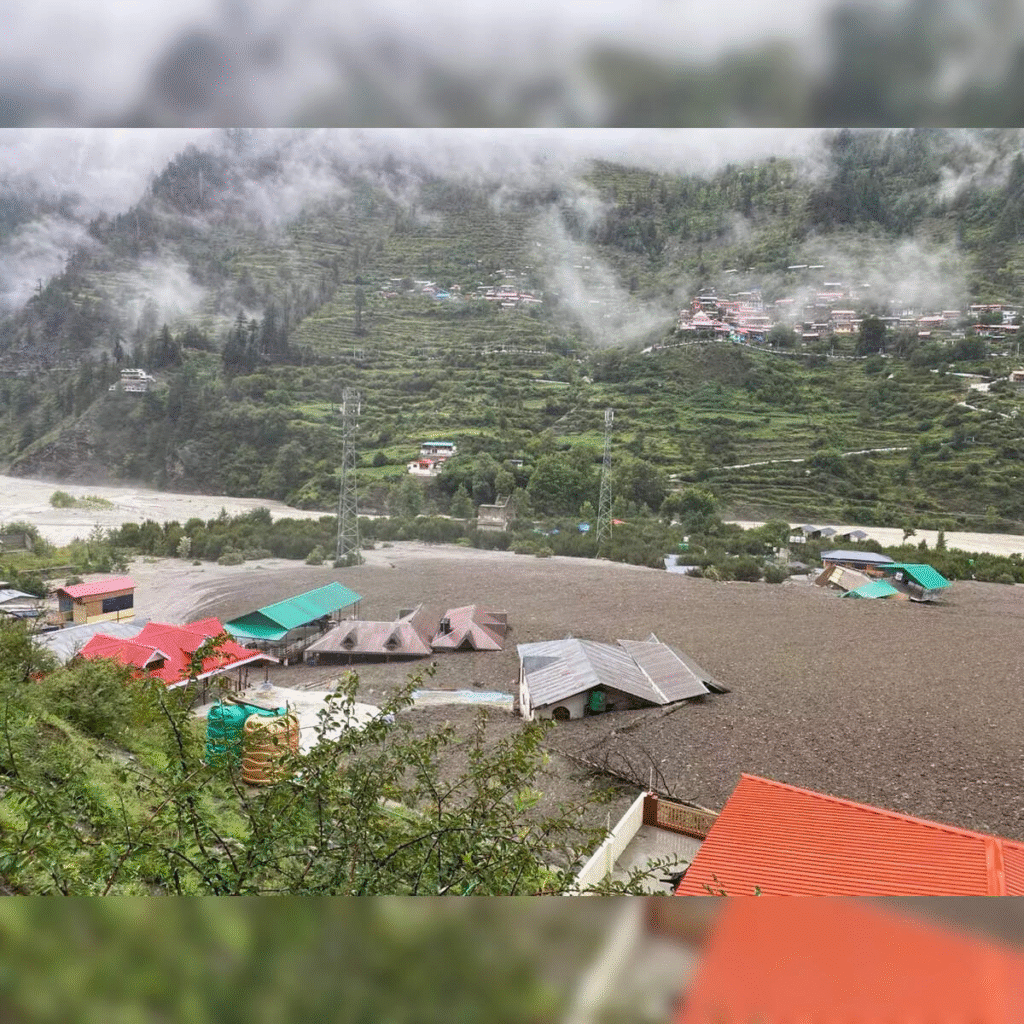
Transportation infrastructure damage has severely hampered the Uttarkashi cloudburst response efforts. The critical Uttarkashi-Harsil road has been blocked by multiple landslides, forcing rescue teams to approach on foot through treacherous terrain. The Harsil helipad, essential for aerial operations, was completely washed away, eliminating a crucial logistical hub.
Blockbuster Bonanza: Must-Watch Movies Releasing in India, August 2025
Weather conditions continue to pose significant risks, with the IMD issuing warnings for continued heavy rainfall until August 10. The Indian Air Force has placed Chinook helicopters, Mi-17s, and other aircraft on standby at Chandigarh Air Base, ready to deploy once weather conditions improve.
Tourism Industry Devastation
The economic impact of the Uttarkashi cloudburst extends far beyond immediate infrastructure damage, severely affecting the region’s tourism-dependent economy. Dharali serves as a crucial stopover for pilgrims traveling to Gangotri Dham, one of the holiest Hindu pilgrimage sites, and the destruction of hotels and guesthouses will have lasting economic consequences.
Local tourism operators estimate that the disaster destroyed approximately 80% of accommodation facilities in Dharali, representing millions of dollars in economic losses. The timing proves particularly devastating as the incident occurred during peak pilgrimage season, when thousands of visitors typically pass through the area daily.
Beyond immediate infrastructure losses, the Uttarkashi cloudburst has disrupted the entire Char Dham Yatra pilgrimage circuit, affecting tourism revenues across multiple districts. Road closures and safety concerns will likely deter visitors for months, compounding economic hardship for communities dependent on religious tourism.
Environmental and Development Concerns
Environmental activists have seized upon the Uttarkashi cloudburst tragedy to highlight ongoing concerns about unregulated development in ecologically sensitive Himalayan regions. Critics argue that excessive construction activity, particularly the expansion of tourism infrastructure, has increased vulnerability to natural disasters.
Atul Satti, a prominent environmental activist, emphasized the lack of adequate early warning systems: “Uttarakhand faces disasters every monsoon season—cloudbursts, landslides, and flash floods have become more frequent than ever. But where is the early warning? Even a few minutes’ notice could have saved many lives”.
Local journalists familiar with the region report that unauthorized construction has encroached upon the natural course of the Kheer Ganga river, potentially exacerbating the Uttarkashi cloudburst impact. “People have also encroached on the river’s course and built houses and homestays on it,” explained Shailendra Godiyal, who has covered Uttarkashi for nearly fifteen years.
Hindu Terrorism Debate: Examining Amit Shah’s Statement
The broader implications of the Uttarkashi cloudburst extend beyond immediate disaster response to fundamental questions about sustainable development in climate-vulnerable regions. Scientific research indicates that Uttarakhand experiences more cloudburst events per unit area than any other region in the Indian Himalayas, with incidents becoming increasingly severe.
Government Response and Political Implications
Political leaders across party lines have responded to the Uttarkashi cloudburst with expressions of sympathy and promises of comprehensive support. Prime Minister Narendra Modi spoke directly with Uttarakhand Chief Minister Pushkar Singh Dhami to coordinate federal assistance, while Union Home Minister Amit Shah directed multiple specialized teams to the disaster zone.
Chief Minister Dhami, who cut short an official visit to Andhra Pradesh, described the tragedy as “extremely sad and distressing” and assured that relief operations were proceeding “on a war footing”. The state government has established emergency helplines and reserved hospital beds across the region to handle casualties.
Shah Rukh Khan’s Historic National Film Award and Full Winners’ List
However, the Uttarkashi cloudburst has also renewed criticism about disaster preparedness and environmental policies in vulnerable mountain regions. Opposition politicians and environmental groups argue that the tragedy reflects systematic failures in early warning systems and uncontrolled development approvals.
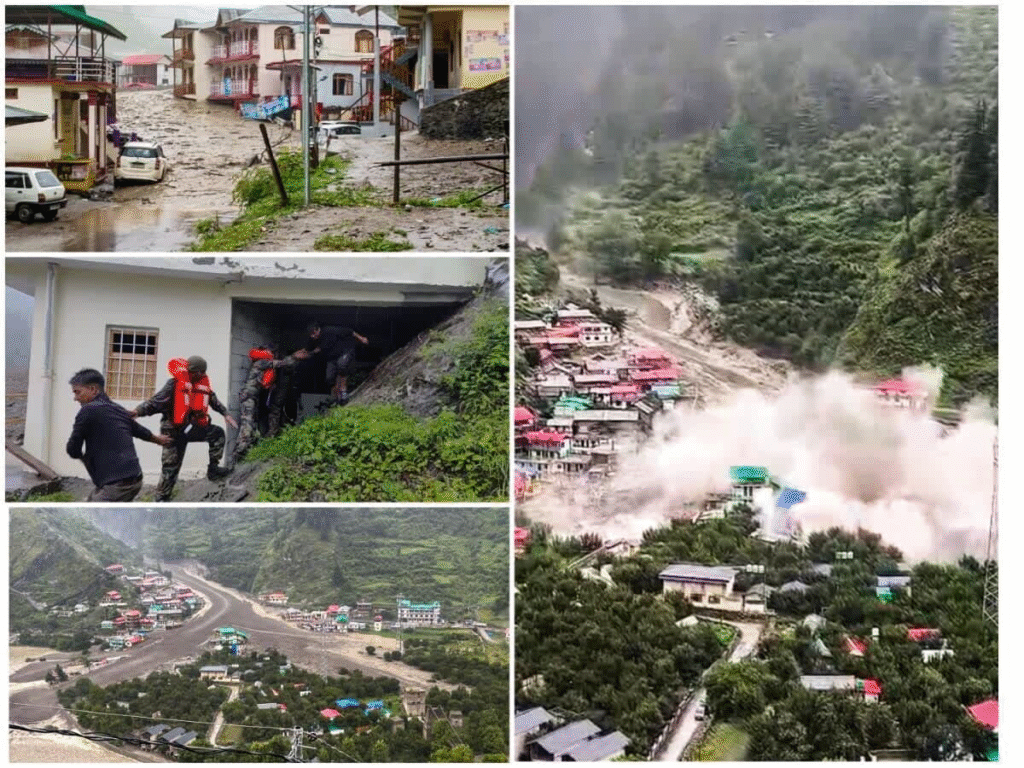
- India Meteorological Department – Official weather data and forecasting
- National Disaster Management Authority – Disaster preparedness guidelines
- Uttarakhand State Disaster Management Authority – State-level disaster response information
Trump’s Statement on India’s “Dead Economy”: Understanding the Context and Implications



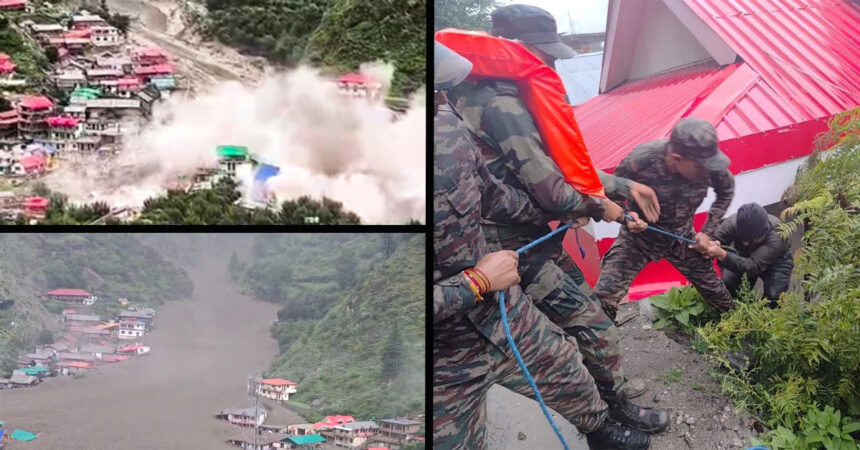



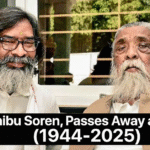

CreatBot D600 Pro 2 is a state-of-the-art 3D printing device designed for engineers requiring accuracy, reliability, and versatility in 3D printing. As part of the D600 lineup, it incorporates a large build volume, advanced dual extrusion technology, and top-tier features suitable for industrial-scale applications and complex materials.
CreatBot D600 Series Overview
The CreatBot D600 Series and D600 Pro establish benchmarks for large-scale 3D printers solutions. With a build volume of 600 ? 600 ? 600 mm, these professional large format 3D printers cater to a broad spectrum of industrial 3D printing demands, from large model prototyping to end-use production. The D600 Pro lineup and the latest D600 Pro 2 introduce further improvements in performance and material compatibility.
Key Features and Advantages
Large Industrial Build Volume
Build size: 600 ? 600 ? 600 mm
Ideal for large format 3D printing projects and industrial 3D printing
Supports engineering-grade materials and intricate models
Dual Extrusion and High-Heat Printing
4th generation dual 1.75mm extruders for multi-material printing
Right and left-side extruder design for flexible printing
Supports high performance 3D materials, including PLA, nylon filament, carbon fiber, and more
Maximum nozzle temperature: up to 420°C (high temperature)
Heated build chamber for high-performance applications
Accuracy, Speed & Dependability
Professional 3d print quality with accurate layer resolution
Advanced motion system for fast printing and robust performance
Consistent printing speed up to 120 mm/s
Reliable operation for continuous industrial use
Supported Materials and Filaments
Wide Filament Compatibility
Works with a broad spectrum of filament: PLA, ABS, PC, PETG, PVA, nylon, carbon fiber, and more
Designed for engineering-grade materials and functional prototyping
Advanced dual extruder 3d printer enables multi-material and soluble support printing
Uses: Prototyping & Manufacturing
The CreatBot D600 Pro 2 and D600 Pro 3D printer serve a diverse set of applications:
Rapid prototyping and large format 3D print models
Functional parts for automotive, aerospace, and engineering
Tooling, jigs, and fixtures for industrial production
Art, architecture, and creative projects requiring large-scale industrial 3d printing
Technical Specifications
Model: CreatBot D600 Pro 2, D600 Pro, D600
Build volume: 600 ? 600 ? 600 mm
Extruders: Dual extruder, 4th generation 1.75mm dual extruders and hotends
Maximum extruder temperature: 420°C
Bed temperature: up to 100°C
Filament diameter: 1.75 mm
Layer height: 0.05 – 0.3 mm
Supported materials: PLA, ABS, PC, PETG, PVA, nylon, carbon fiber, engineering-grade materials
Print speed: up to 120 mm/s
Enclosure: Heated, for improved material properties
Control: Touchscreen interface
File formats: STL, OBJ, AMF
Comparing D600 Models
Key Differences
D600 model: Entry-level industrial large scale 3d printer for basic applications
D600 Pro model: Enhanced with heated chamber, auto bed leveling, and wider material support
D600 Pro 2 model (professional version): Adds higher printing speed, improved reliability, and HS (high speed) configuration
Additional CreatBot Printers
CreatBot D1000 for even larger build volumes
CreatBot lineup includes industrial and professional 3d printer solutions
FAQ
What materials can the CreatBot D600 Pro 2 print?
The D600 Pro 2 is compatible with a wide range of filament types including PLA, ABS, PETG, PC, nylon, carbon-fiber, and other engineering-grade materials.
Maximum Build Volume of D600 Pro 2
The printing volume is 600 ? 600 ? 600 mm, supporting large model and industrial 3d printing needs.
Dual Extruder and High-Temp Support on D600 Pro 2
Yes, it is equipped with dual extrusion technology and reaches up to 420°C for high-temperature printing process.
What differentiates the D600 Pro 2 from the D600 Pro?
The D600 Pro 2 offers higher print speed, improved reliability, and the new HS (high speed) option.
Summary
The D600 Pro 2 and the D600 Pro set the benchmark in the industrial large scale 3d printer category. With exceptional build volume, robust dual extrusion system, compatibility with engineering-grade materials, and top performance across applications, they empower businesses and engineers to achieve new heights in industrial 3d printing.
Может быть полезным: или
Searching for natural dreads for sale?
Discover the best natural dreads at natural dreadlocks, your go-to shop for natural dreadlocks extensions online.
Our collection of natural dreadlocks offers handcrafted extensions made from 100% human hair, ensuring a flawless blend for any style. Whether you want long natural dreadlocks or customized natural dreadlocks hair, we have just what you need.
Why choose our natural dreadlock extensions?
– 100% human hair for lasting beauty and natural feel.
– Expertly crafted by skilled artisans to blend seamlessly.
– Available in a wide range of colors, including natural grey dreadlocks.
– Suitable for protective styles
– Fast delivery with reliable service.
Shop natural dreads that offer comfort and style. Our dreads natural are ideal for anyone looking to enhance their look without compromising authenticity.
Explore the best natural dread products and take your hairstyle to the next level with beautiful natural locs for sale. Whether you are new to dreadlocks, we provide products that celebrate your unique identity.
Order now from Looking for natural dreads for sale?
Discover the finest natural dread hair at , your trusted source for natural dreadlocks extensions online.
Our collection of natural locs offers premium-quality dreads made from 100% human hair, ensuring a natural look for any style. Whether you want natural grey dreadlocks or customized natural dreadlocks hair, we have the perfect set.
Why choose our natural dreadlocks for sale?
– 100% human hair for lasting beauty and natural feel.
– Expertly crafted by skilled artisans to match your natural hair.
– Available in a wide range of colors, including classic natural tones.
– Suitable for protective styles
– Fast delivery with reliable service.
Buy natural dreadlocks that look and feel natural. Our dreads natural are perfect for adding volume and length without compromising authenticity.
Explore the finest natural dreadlocks collection and take your hairstyle to the next level with realistic natural dreadlocks hair. Whether you are seasoned in natural hair styles, we provide quality, style, and expert guidance.
Order now from— where natural dread hair meets artistry. — your destination for natural dreadlocks.
Услуга доставки тюльпанов может стать отличным подарком для любимых. Тюльпаны ассоциируются с теплом и настроением весны. Выбор тюльпанов для подарка — это всегда удачное решение.
Закажите
Разнообразие тюльпанов поражает воображение. Каждый сорт имеет свою уникальную красоту и характер. Это позволяет выбрать идеальный букет для любого повода.
Услуга онлайн-доставки тюльпанов становится все более популярной. Преимущества интернет-заказа очевидны — экономия времени и усилий. Многочисленные сервисы предлагают разнообразные букеты.
Доставка тюльпанов в кратчайшие сроки гарантирует радость получателю. Вам предоставляется возможность указать удобное время для отправки. Не забывайте также о возможности выбора оформления букета.
Гелиевые шарики — замечательное решение для оформления праздника. Такие шарики придают особую атмосферу и радость любому торжеству.
для вашего праздника!
Существует множество вариантов гелиевых шариков на любой вкус. Вы можете выбрать шарики с рисунком или однотонные, в зависимости от темы вашего события.
Где купить гелиевые шарики? Их можно найти в магазинах для праздников или заказать через интернет. Приобретать шарики онлайн — это зачастую быстрее и проще.
Обратите внимание на правила безопасности при использовании шариков с гелием. Следите за тем, чтобы шарики не оказывались вблизи воды и всегда были под контролем.
Букеты из тюльпанов на 8 марта — это идеальный способ выразить свои чувства и сделать этот день незабываемым.
Тюльпановые букеты к 8 марта — это отличный способ выразить свою любовь и уважение к женщинам. Не забывайте, что именно ваше внимание и забота делают подарок по-настоящему значимым.
ремонт водонагревателей москва [url=http://www.master-remonta-boylerov.ru/]http://www.master-remonta-boylerov.ru/[/url]
[url=http://piony-msk.ru/]Пионы купить в Москве букет с доставкой на дом недорого[/url]
Многие из этих магазинов предоставляют услугу доставки на дом, что упрощает процесс покупки.
Свадебный букет для невесты можно купить в Москве недорого. Свадебный букет является важной частью образа невесты, и его выбор требует особого внимания.
Даже при скромном бюджете найдется масса красивых букетов, которые будут выглядеть стильно. Среди большого количества флористических компаний в Москве можно найти множество интересных предложений.
При выборе букета стоит учитывать стиль свадьбы, а также предпочтения невесты. Букет должен быть в тон к платью и общему антуражу свадьбы, поэтому стоит уделить этому внимание.
Обсуждая все детали с флористом, можно создать идеальный свадебный букет. Обязательно заказывайте букет заранее, чтобы не сталкиваться с проблемами в день свадьбы.
Идеальные источники бесперебойного питания для дома, разберитесь.
Рейтинг лучших ИБП, с нами.
Преимущества использования ИБП, получите все ответы.
Рекомендации по выбору источников бесперебойного питания, читайте.
Как выбрать идеальный источник бесперебойного питания, здесь.
Советы по покупке источников бесперебойного питания, узнайте.
Обзор актуальных источников бесперебойного питания, читайте.
Технические аспекты ИБП, узнайте.
Советы по использованию ИБП, получите советы.
Тенденции рынка источников бесперебойного питания, ознакомьтесь.
Как правильно подключить ИБП, читайте.
Как выбрать ИБП для разных нужд, узнайте.
Инсайдерские советы по выбору источников бесперебойного питания, здесь.
Все о различных типах источников бесперебойного питания, здесь.
Как установить источник бесперебойного питания?, в нашем материале.
Обзор популярнейших источников бесперебойного питания, читайте.
Как продлить срок службы ИБП, узнайте.
Как выбрать ИБП для игры, здесь.
Что учесть при выборе источника бесперебойного питания, получите информацию.
купить ИбП
это современное оборудование для точной обработки металла и дерева.
Эти устройства позволяют выполнять высокоточную обработку металлических и неметаллических заготовок.
Применение ЧПУ сокращает время производства и уменьшает количество брака. Такие технологии нашли применение в производстве инструментов, деталей и сложных конструкций.
#### **2. Принцип работы токарных станков с ЧПУ**
Основой функционирования станка является программное управление, которое задает траекторию движения резца.
Датчики положения и скорости обеспечивают стабильность и точность обработки. Таким образом, достигается высокая повторяемость деталей и минимальные отклонения от чертежа.
#### **3. Преимущества токарных станков с ЧПУ**
Главное достоинство таких станков — высокая скорость и точность обработки.
Программное управление минимизирует ошибки и повышает эффективность работы. Кроме того, станки с ЧПУ обладают гибкостью и могут быть быстро перенастроены под новые задачи.
#### **4. Перспективы развития токарных станков с ЧПУ**
В будущем ожидается увеличение степени автоматизации и интеграция искусственного интеллекта.
Использование облачных технологий упростит управление и диагностику оборудования. Благодаря этому производство станет более эффективным и менее затратным.
—
### **Спин-шаблон:**
#### **1. Введение в токарные станки с ЧПУ**
Сегодня трудно представить промышленность без токарных станков, оснащенных числовым программным управлением. Такое оборудование обеспечивает точное и быстрое изготовление деталей из различных материалов.
Автоматизация токарных работ минимизирует человеческий фактор и ускоряет выполнение задач. Такие технологии нашли применение в производстве инструментов, деталей и сложных конструкций.
*(Шаблон продолжается аналогично для всех последующих разделов.)*